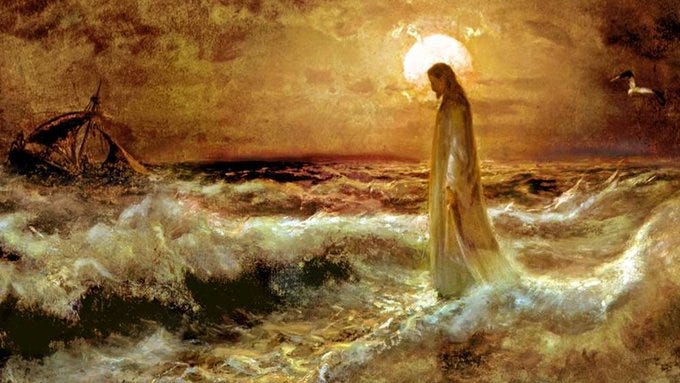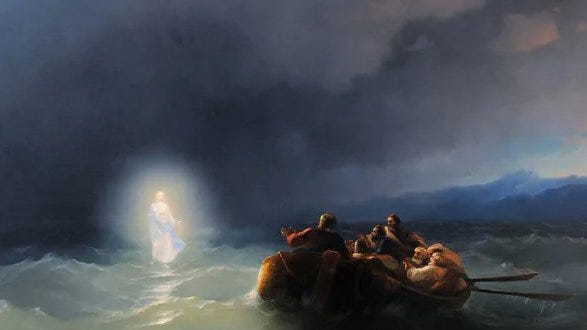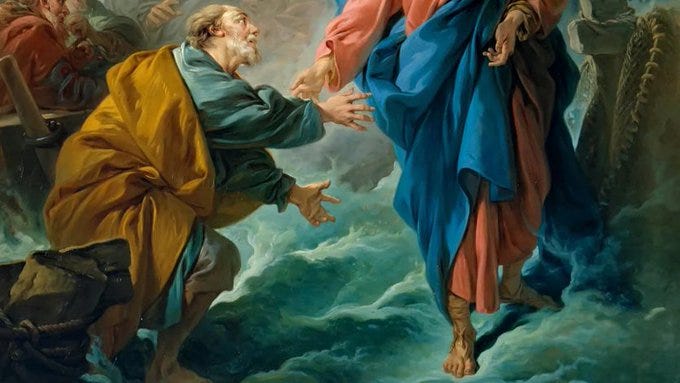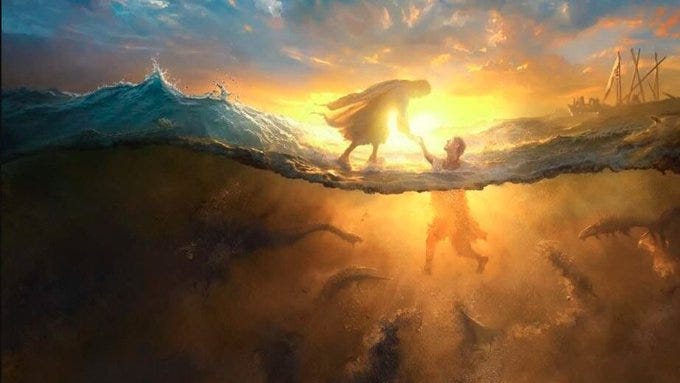Why did Peter sink so suddenly, after just proving he could walk on water?
The secret to mastering overwhelming circumstances.
There’s a mystery hidden in one of the most famous faith stories ever told.
Peter steps out of a boat into a storm. For a moment, he walks on water. But he sinks and must be saved.
This isn’t just a story about miracles. It reveals the secret of how to face chaos, fear, and situations beyond our control.
The Storm at Sea
The scene is dramatic: the disciples are fighting waves on the Sea of Galilee. The wind is fierce. The boat creaks.
Then, through the spray, they see a figure walking on the water.
It is Jesus.
Peter, always the bold one, cries out: “Lord, if it’s you, command me to come to you on the water.”
Jesus answers with a single word: “Come.”
And Peter steps over the side.
Doing the Impossible
For a moment, Peter does the impossible. He walks on water.
But then comes the turning point. Matthew tells us: “When he saw that the wind was boisterous, he was afraid.” (Matt. 14:30)
Peter shifts his focus.
He looks at the storm. He attends to the invisible force of the wind. He becomes afraid. And immediately, he begins to sink.
The moment his attention changes, reality itself changes with it.
Reminder: this is just a glimpse of the members-only deep dives.
Upgrade for a few dollars a month to support the mission and get premium content:
In-depth articles every Wednesday and Sunday
Access to the full archive of Bible expositions
The Pattern Beneath the Story
Biblical stories are never arbitrary. Every detail carries a cosmic dimension.
Water in Scripture represents chaos, the abyss, death, and overwhelming forces. In Genesis, the earth is “formless and void” with the waters of the deep covering all things.
Wind represents spiritual forces - unseen powers, invisible currents that shape the visible.
Jesus is the incarnation, the fixed point, the axis of creation, the stable reference at the center of it all.
Peter succeeds when his gaze is fixed on the incarnate Word. He fails when he divides his attention between the stable center and the chaotic periphery.
The Cry and the Rescue
Sinking fast, Peter cries out: “Lord, save me!”
His prayer is perfect: short, direct, desperate. No theology, no explanations, no self-justification.
Just raw dependence.
Immediately, Jesus reaches out His hand and catches him.
Then comes the gentle rebuke: “O you of little faith, why did you doubt?” The Greek word for “doubt” (distazō) literally means “to be of two minds,” to waver between two reference points. Peter became double-minded.
His attention split, his faith dissolved.
Echoes of Creation
This is not just a miracle of one man in one storm.
Keep reading with a 7-day free trial
Subscribe to Reclaiming the Biblical Worldview to keep reading this post and get 7 days of free access to the full post archives.






